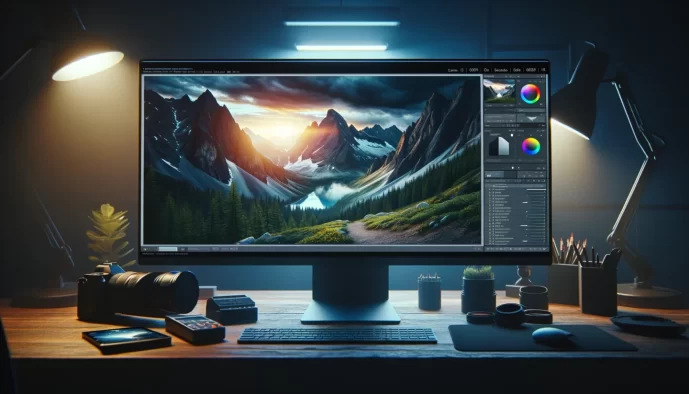RAW Processing
Unlock RAW photo potential: from capture to final edit.

Introduction to RAW Photography
What is RAW?
RAW files are digital negatives, capturing all data from the camera’s sensor. Unlike processed formats like JPEG, RAW files maintain the highest level of image quality and offer unparalleled flexibility in post-processing.
Benefits of Shooting in RAW
Shooting in RAW provides greater dynamic range and color accuracy, essential for fine-tuning the exposure, white balance, and tonal range. It also allows for non-destructive editing, meaning changes can be made without losing original file information.
Understanding RAW Files
How RAW Works
RAW files store data directly from the sensor without any in-camera processing. This data must be interpreted by RAW processing software to produce an image viewable on screens and for print.
RAW vs JPEG
RAW files have a wider dynamic range and more color information than JPEGs, which are compressed and processed in-camera, often resulting in lost details in shadows and highlights.
Essential Tools for RAW Photography
Cameras and RAW Formats
Most digital cameras today support RAW format, though each brand has its proprietary version, like NEF for Nikon or CR2 for Canon. It’s essential to understand your camera’s specific RAW format to ensure compatibility with editing software.
Software for RAW Editing
Adobe Lightroom and Capture One are industry standards for RAW processing, offering comprehensive tools for editing and organizing your images. Open-source alternatives like Darktable are also available.
Mastering RAW Shooting
Camera Settings for Optimal RAW Capture
To maximize the quality of RAW files, shoot with the lowest ISO possible and use the full dynamic range of your camera. Ensuring proper exposure is crucial as it determines how much detail is retained.
Exposure Techniques in RAW
Mastering the histogram is key; it should be balanced without clipping at either end. Techniques like exposure bracketing can help capture the full range of a scene’s luminance.
In-Camera RAW Processing
Some cameras offer in-camera RAW processing options, handy for quick adjustments or previews before diving into more sophisticated post-processing.
Post-Processing RAW Images
Basic Adjustments in RAW Editors
Adjustments like exposure, contrast, clarity, and saturation are fundamental. Correcting white balance is also essential and is effortlessly achieved with RAW files.
Advanced Editing Techniques
Delve into local adjustments, layer masks, and frequency separation for fine-tuning. Utilize sharpening and noise reduction sparingly to maintain the natural look of your images.
Managing Your RAW Files
Organize your files with a consistent naming convention and use metadata to streamline your workflow. Storage is crucial – invest in reliable hard drives or cloud-based solutions.
Creative Techniques in RAW
Exploring HDR with RAW
RAW files are ideal for HDR processing due to their wide dynamic range. Merging multiple exposures of a scene ensures details are preserved in highlights and shadows.
Black and White RAW Processing
RAW files give full control over the conversion to black and white, allowing photographers to manipulate color channels and tonal ranges for a striking monochromatic image.
Using Presets and Profiles
Presets and profiles can be a starting point for consistent styles or to invoke inspiration. However, use them judiciously and customize to fit the unique aspects of each image.
Converting and Sharing Your Work
Exporting to Different Formats
When ready, convert RAW files to formats like JPEG or TIFF, depending on the intended use. Understand the implications of each format on image quality and file size.
Sharing on Social Media and Online Platforms
Optimize your images for the platform you’re using. Consider the resolution and aspect ratio requirements of each social media to maintain the integrity of your images.
Conclusion
Embracing the Power of RAW
RAW photography is a journey of discovery, an art form where the creative process extends beyond the click of a shutter. It demands patience and skill, but the payoff is absolute control over every pixel of your image, a true manifestation of your vision. As you embrace the power of RAW, remember, it’s not just about capturing moments; it’s about creating masterpieces.